Personalities
Rolex and the Beauty of Architecture
Personalities
Rolex and the Beauty of Architecture
Rolex has also been a great supporter of the art of architecture, founding the Rolex Mentor and Protégé Arts Initiative in 2002, sponsoring the International Architecture Exhibition of La Biennale di Venezia and promoting the work of spectacular architects. The buildings Rolex has created all around the world have won awards for design and innovation.
“Rolex’s dedication to precision, high-performance and aesthetics links the company to world-class architecture,” said Arnaud Boetsch, Director of Communication & Image at Rolex. “In watchmaking, as in architecture, excellence in design creates the perfect expression of form and function.”
When it All Began
Rolex’s connection with outstanding architecture started 60 years ago when the company began to develop relationships with some of the world’s most acclaimed architects.
With the architectural firm of Addor, Julliard & Bolliger, Rolex made its mark on Geneva by erecting towers on columns in the industrial area of Praille-Acacias. In a unique contemporary reinterpretation of the concept of a factory, a whole series of activities — ranging from the manufacture of watches and related products to marketing, after-sales service and distribution — were clustered in one place. Mingling offices and manufacturing workshops in the same spatial unit, the buildings formed a complete entity, which was both complex and autonomous. The two-tower, metal-and-glass structure was a tangible expression of concepts dear to the brand, such as precision in detail, care in assembly and technical excellence. Rolex’s new headquarters quickly became an icon of modern architecture in Geneva.
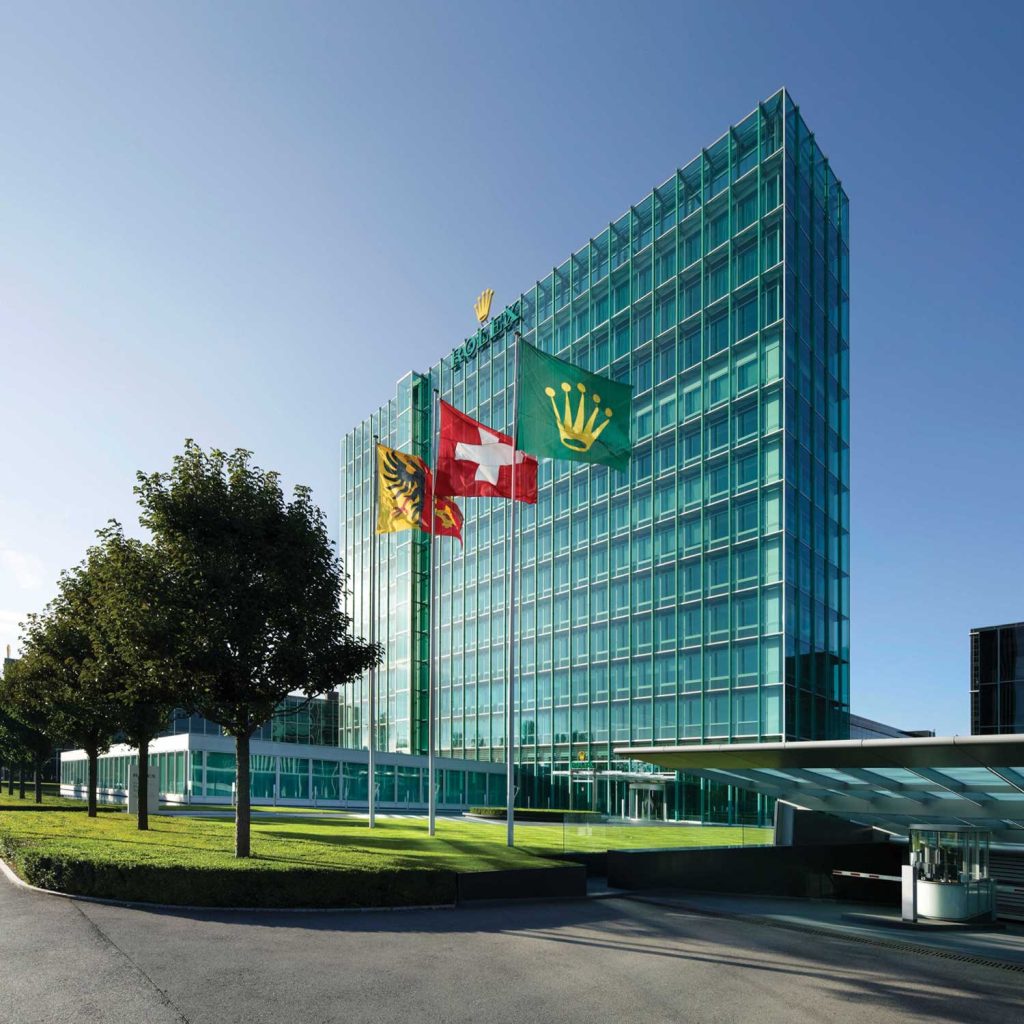
The Rolex facilities in Geneva

The Rolex Learning Center (Lausanne, Switzerland)
International Architecture Exhibition
Rolex is the exclusive Partner and Timepiece for the 16th International Architecture Exhibition of La Biennale di Venezia, the brand’s third time in this role since 2014. The theme of the 2018 exhibition set by curators Yvonne Farrell and Shelley McNamara is FREESPACE and Rolex has its own pavilion on site addressing this topic.
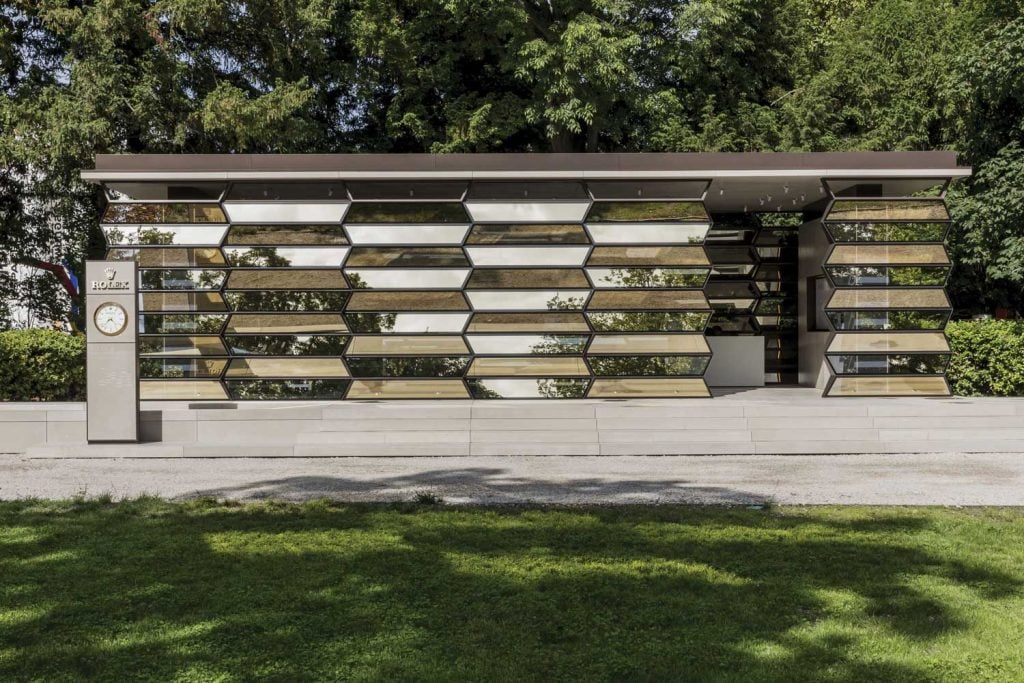
The Rolex Pavilion at the International Architecture Exhibition in Venice, Italy, inspired by the fluted bezel of an Oyster Perpetual Day-Date

Rolex Day-Date 40 timepiece in yellow gold
“As I get older, I realise that I’ve become less interested in the buildings and more interested in the cities they’re in and how we design them,” said Chipperfield. “The power of architecture is not in a single act, but in the way many buildings come together to create the collective environments in which we live our lives. As architects we must become bolder at reinforcing this point through our work.”
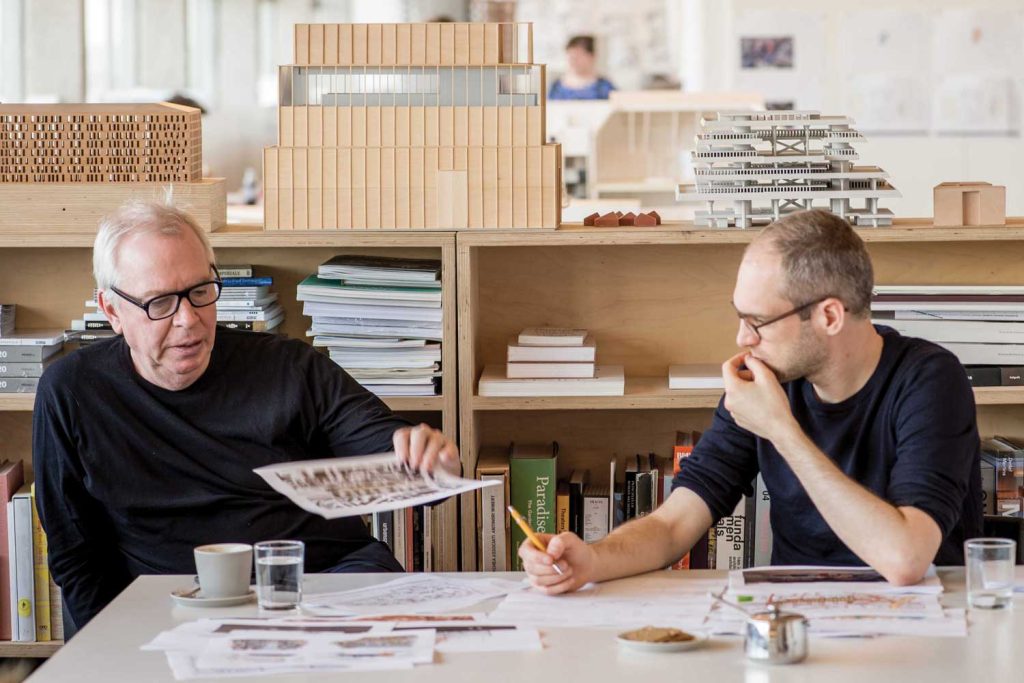
Sir David Chipperfield and Simon Kretz at work
Mentorship in Architecture
The Mentor and Protégé Arts Initiative was launched by Rolex in 2002 and pairs talented artists in the early stages of their careers with masters in their fields. The program includes architecture, dance, film, literature, music, theater and visual arts. There is also a variable eighth mentorship that can take place in other fields of the arts or in an interdisciplinary pursuit.
The mentoring period is two years, during which Rolex asks its mentors and protégés to interact for at least six weeks, though many spend considerably more time together than this.
Since its inception, more than 1,100 young professional artists from 105 countries have been nominated to participate, thereby coming to the attention of experts in their fields. A total of 253 influential figures in the arts have nominated young artists and selected protégé finalists, and 123 major artists and creative leaders have served as advisors to the program. To date, 54 artists have agreed to serve as mentors and they have chosen 54 protégés from 34 countries. Rolex considers the development of this global creative community to be one of the highest achievements of the Rolex Arts Initiative. Other distinguished architects — Álvaro Siza, Pritzker Prize winner Kazuyo Sejima and Peter Zumthor — have also served as mentors during the program’s 16 years.
The two most recent Mentor-Protégé pairs in architecture are Sir David Chipperfield (UK) and Simon Kretz (Switzerland), a partnership that ended this year, and Sir David Adjaye (Ghana/UK) and Mariam Kamara (Niger), which started this year and was announced at the Biennale in Venice.
A Thought Experiment
Many times, a mentor and protégé partnership involves a tangible project — a building, a film, a novel or a performance. In the case of Chipperfield and Kretz, they decided to do something more conceptual, focusing on the “blue sky” development of a neighborhood in England, answering questions like: How is a city made? Who shapes it? How is its future determined? How democratic is it? And, most importantly, what can we do to make the planning process better?
They focused on a real and controversial site in London — the Bishopsgate Goodsyard in Shoreditch — a former freight depot on the borders of the City of London and the East End. Together with Kretz’s students from the Department of Architecture ETH Zurich, the two architects analyzed the complexities of the forces involved with planning — economic, political and social — that shape the city.
Over a year of discussion, drawing, writing and teaching, they studied the physical, social and regulatory contexts, and the intricacies of the planning process.
“Planning,” the authors wrote in their new book, On Planning — A Thought Experiment, “can be understood as the generator of the city’s urban code… the script for its development, while architecture focuses rather on the city’s form, its physical as well as social manifestation.”
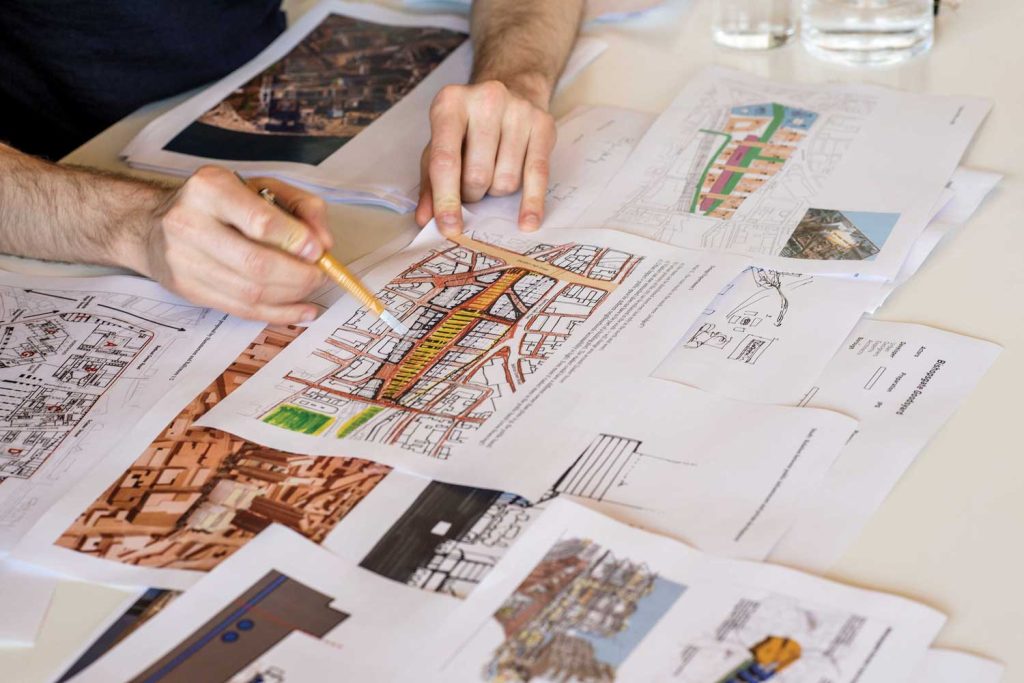
Working on the On Planning project
“You can’t save a city with good architecture, but you can with good planning,” Chipperfield summed up.
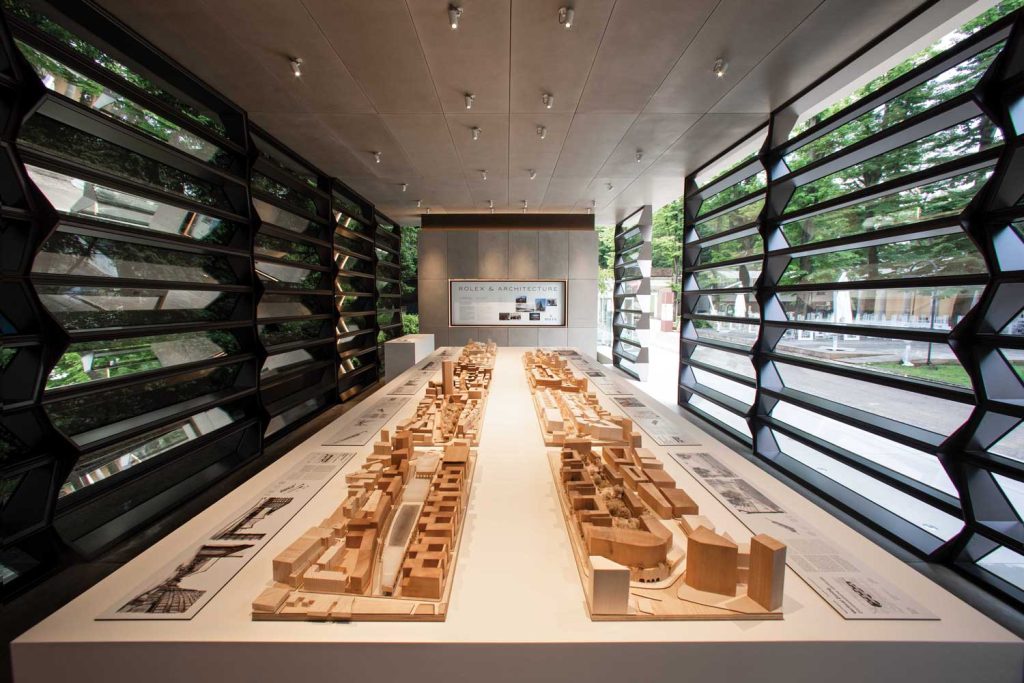
The interior of the Rolex Pavilion, showcasing the nine models from Kretz’s students
Chipperfield is impressed with Rolex, after his experience as a mentor. “My impression of Rolex is of a brand dedicated to craftsmanship, foremost in watchmaking but appreciative and supportive of skill in other disciplines too,” Chipperfield said. “There is very strong brand philosophy that is consistent and universally understood, yet always dynamic in its activities. As a world-renowned brand, Rolex provides a strong international platform and the necessary support for an ongoing dialogue outside of the professional environment, reminding one of more universal societal concerns and issues that professions face.”
The Newest Partnership
Being selected to work with Adjaye was an emotional moment for Kamara. “For me, David Adjaye was the perfect person to work with,” she said. “I have been carefully following his career. When I heard that Rolex and he had selected me, I just started crying.”
Said Adjaye, “I recognise the power of mentorship and how important it is as you start to emerge and form a voice. When approached by Rolex, I felt obligated to give back. To have one student where one is interacting for two years is a magical thing… At almost every point in my career there has been somebody that has stepped up [as a mentor]. It is really good to have an experienced ear, someone who says, ‘You might think twice about doing that.’ Or, ‘Stick to your principles, follow them through.’
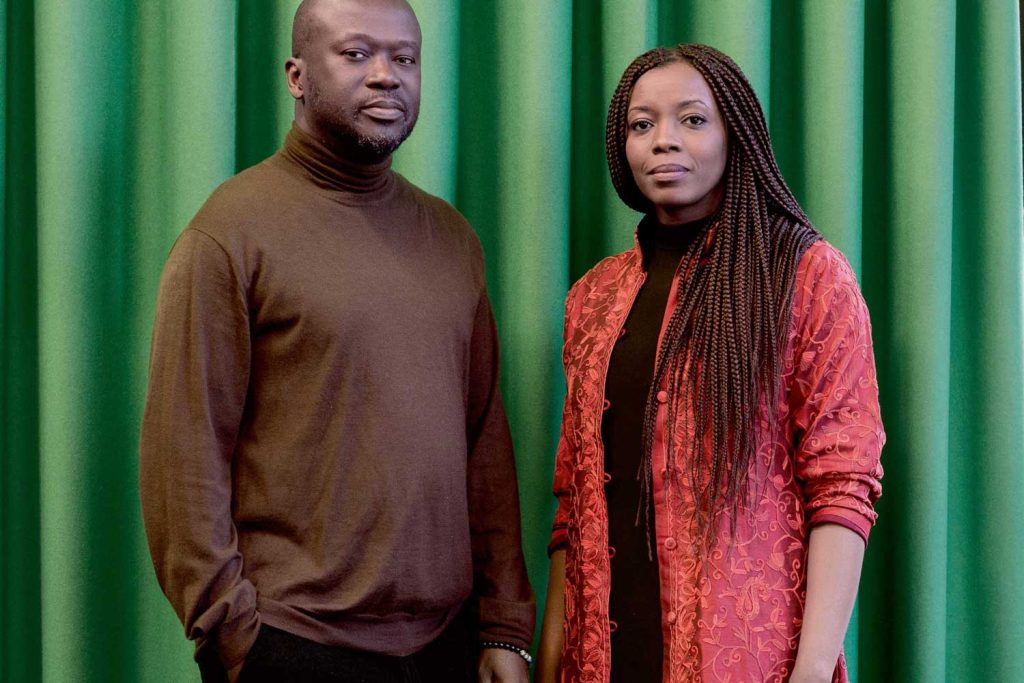
Sir David Adjaye and Mariam Kamara
Kamara, an architect from Niger, recently visited the Rolex facilities in Geneva and was impressed with the parallels between watchmaking and architecture. “Architecture is all about time really, in all of its facets. In fact, one of my first discussions with Sir David was asking him how he finds the time to juggle all of his projects with all of the teams around the world and make sure that the creativity still comes through. I was pulling my hair out over that in my own practice, and he gave me advice that allowed me to draft an entire road map of how to restructure my firm. I went back to my team in Niger and changed everything! It has allowed me to free up so much time for actual design work.”
During their time together, they will work on the design of a public space in Niamey, the capital of Niger, which will serve as a cultural center and arts institution.
Excellence in Architecture and Watches
Rolex’s approach concentrates on excellence in each area in which they operate. The brand’s incredible buildings and workspaces inspire and contribute to the high quality of its timepieces. Nothing is taken for granted. Classic architectural lines define Rolex’s timeless watches, including the Cellini, Day-Date and Datejust.
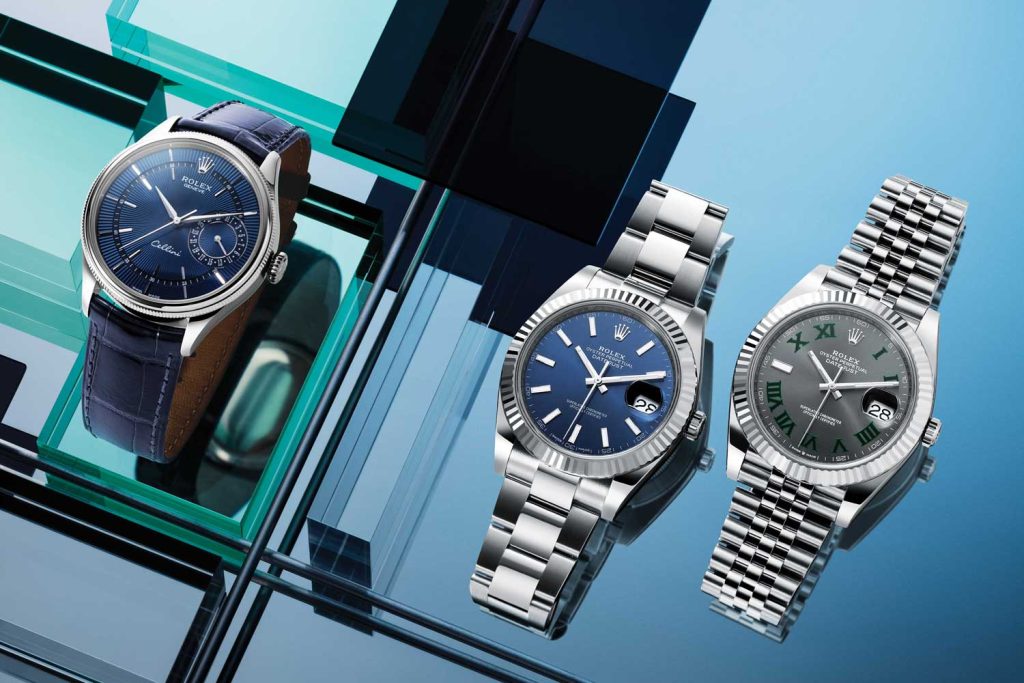
Rolex Cellini Date timepiece in white gold case with polished finish and blue leather strap (far left); Rolex Datejust 41 timepieces in Oystersteel and white gold case and Oystersteel bracelet










